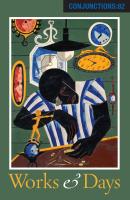Contributor History
- The River Abides — With photographs by the author, Online 05-10-2023
Biography
Susan Hanson is the author of Icons of Loss and Grace: Moments from the Natural World (Texas Tech UP) and co-editor of What Wildness Is This: Women Write About the Southwest (University of Texas Press). Her work has been anthologized in Getting Over the Color Green (University of Arizona Press), Let There Be Night: Testimony on Behalf of the Dark (University of Nevada Press), and To Everything on Earth (Texas Tech UP) and has also appeared in numerous journals including ISLE, Southwestern American Literature, Texas Parks & Wildlife, and Northern Lights. Before retiring, she taught English at Texas State University for over 40 years, worked as a newspaper journalist, and served as lay chaplain for the Episcopal campus ministry at Texas State.
